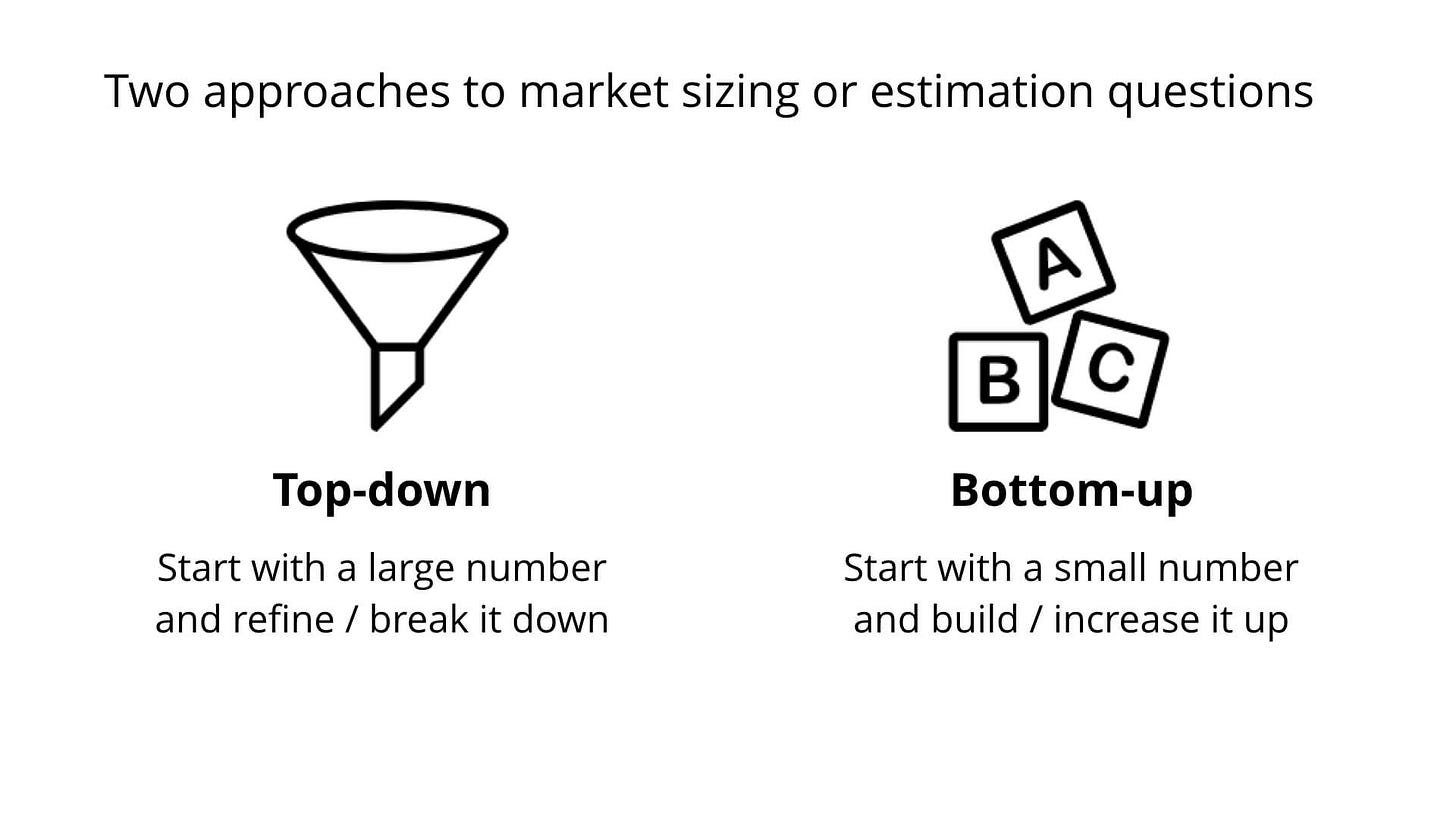Hello and welcome to another newsletter!
Imagine that you've just spent three years building a fantastic business – your product is great, your website is cutting edge, your people are well-trained and enthusiastic, and your customers love what you do. However, you will be still running at a loss if there simply aren't enough customers in the market to support the business.
This edition discusses market sizing and how you can use this data to make informed decisions.
Market sizing
The "market size" is made up of the total number of potential buyers of a product or service within a given market and the total revenue that these sales may generate. [1]
Market sizing can also help you estimate the number of people you may need to hire before launching a new product or service.
Through market sizing, we estimate the potential buyers. This helps us in predicting the revenue which we can generate from our product. The prediction can help us in deciding the investment needed, product pricing and profit margins.
Examples of market sizing questions include:
What is the market size of toothbrushes in India?
How many iPhones are sold in the world each year?
How many people in Hyderabad purchase life insurance?

There are two main market sizing methods: bottom-up and top-down. [1]
Top-Down Approach
Top-down analysis is calculated by determining the total market, then estimating your share of that market. A typical top-down analysis might go something like this: "Hmm... I will sell a widget everyone can use, and since there are 300,000 people in my area, even if I only manage to land 5 per cent of that market, I'll make 15,000 sales."
Bottom-Up Approach
A bottom-up analysis is calculated by estimating potential sales to determine a total sales figure. A bottom-up analysis evaluates where products can be sold, the sales of comparable products, and the slice of current sales you can carve out. While it takes a lot more effort, the result is usually much more accurate.
Weekly Roundup
🛵 Bengaluru-Based EV Maker Ather Launches In Delhi With 14 Charging Stations: Having expanded to Mumbai, Pune, Hyderabad, Kochi, Jaipur and Ahmedabad to add to its presence in Bengaluru and Chennai, Delhi is the company’s tenth sales location in India. [1]
🌾 Bengaluru agritech startup, revolutionising seed classification: Founded in May 2020, Agdhi Technologies Pvt. Ltd. leverages ML and computer vision for seed classification, thereby enabling the farming community to procure quality seeds for better yield. [2]
⚖️ Making Supreme Court Judges' Lives Easier With AI: ManCorp Innovation Labs was behind the development of the automation platform called SUPACE—Supreme Court Portal for Assistance in Courts Efficiency—that India's apex decision making body has deployed. [3]
🤝 Sequoia startup accelerator picks 13 Indian firms for the fifth batch: As early-stage investments continue to see increased action in India, venture capital firm Sequoia's Surge accelerator programme has chosen 13 Indian companies for its fifth batch. [4]
💰Funding Galore: From Licious to Quizizz [5]
🥩 Direct-to-consumer fresh meat and seafood brand Licious has raised $192 million as part of its Series F round led by Temasek and Multiples Private Equity.
📘 Student engagement platform Quizizz has raised $31.5 million as part of its ongoing Series B funding round led by Tiger Global.
🎮 Video game streaming platform Loco has raised $9 million in its seed round led by Krafton, the distributor of PUBG in India and Lumikai, a gaming media fund.
🤑 This week 40 Indian startups raised funding, of which 30 received a total sum of about $471 million.
That’s all for this week!
If you’ve enjoyed this newsletter, please share StartUpDrafts.

